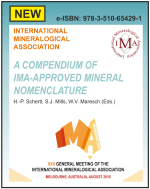
2011 - David H. GREEN
David Green was born and educated in Tasmania and had his first acquaintance with ultramafic and related rocks in 1956, when he mapped an ultramafic complex in the northern part of the island. This interest in ultramafic rocks continued with his PhD research on the Lizard Peridotite, under C. E. Tilley at Cambridge. Following his PhD he was recruited by the Australian National University to work with A. E. Ringwood. Their first collaboration led to the creation of the “pyrolite” model, a prediction of the petrological character of the upper mantle. These two eminent scientists brought research in the geosciences a major step forward by combining high-pressure and high-temperature equipment with the electron microprobe. The “new experimental petrology” led to three classic papers on the application of petrological studies to global tectonics, the gabbro to eclogite reaction and the genesis of basaltic magmas.
David Green has been adept at selecting significant petrological observations or hypotheses and devising experimental strategies to investigate them. He has studied a wide range of topics, including mineral assemblages of peridotites and basalts at high pressures, the experimental calibration of mineral geothermometers and geobarometers, the reasons for compositional variability of basaltic magmas including the roles of carbon and hydrogen, the genesis of carbonatite magmas, the identification of carbonatite metasomatism in the Earth’s lithosphere, the origins of and relationships among lunar basalts, and the nature of the lunar interior.
Throughout his career, David Green has built research teams applying complementary approaches to diverse problems related to the petrology and geochemistry of natural rocks. He has remained active in science since retirement, recently making a significant contribution to discussion of the influence of H2O in nominally anhydrous minerals on the melting of peridotite, which was published in Nature in 2010.



